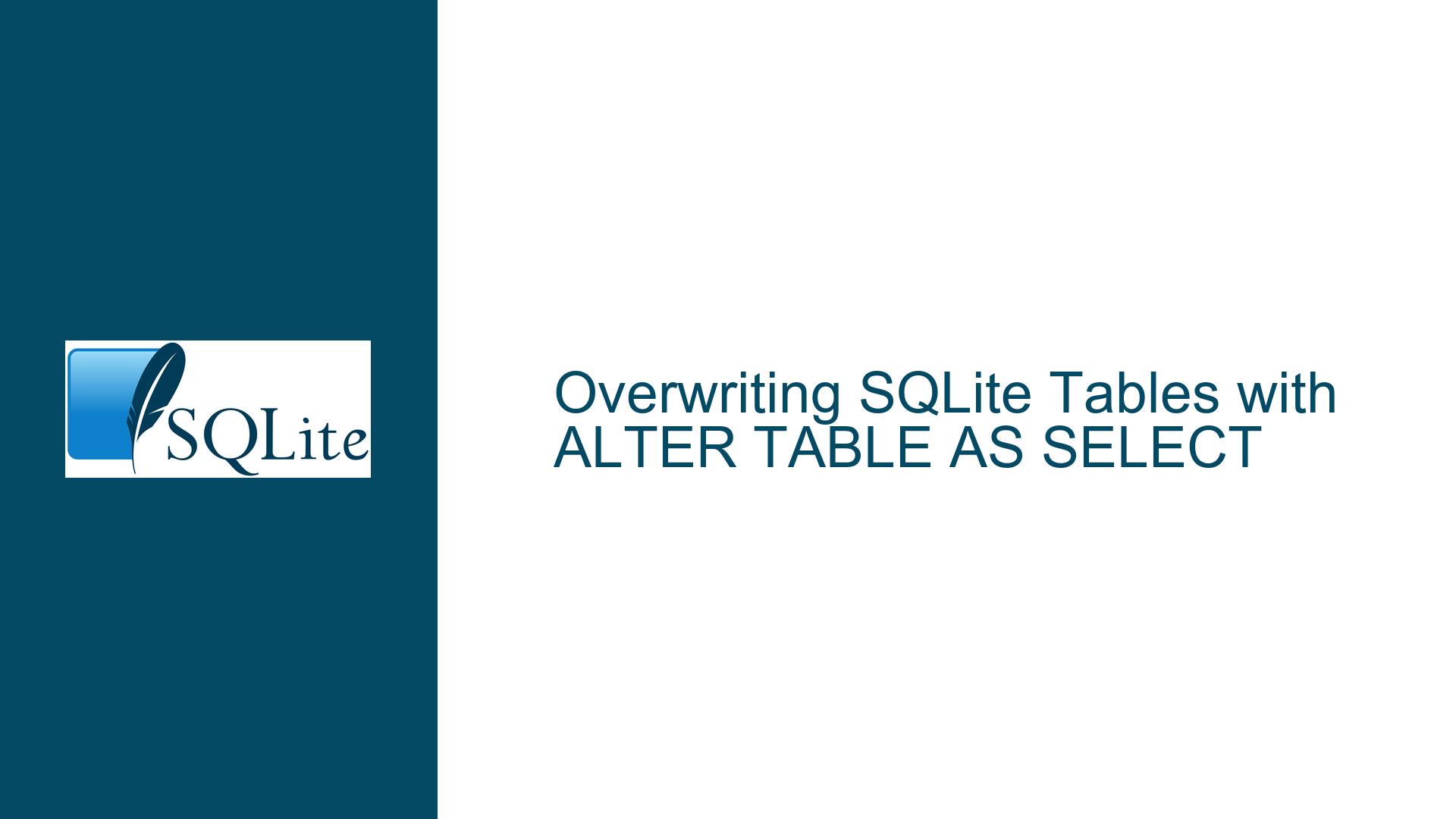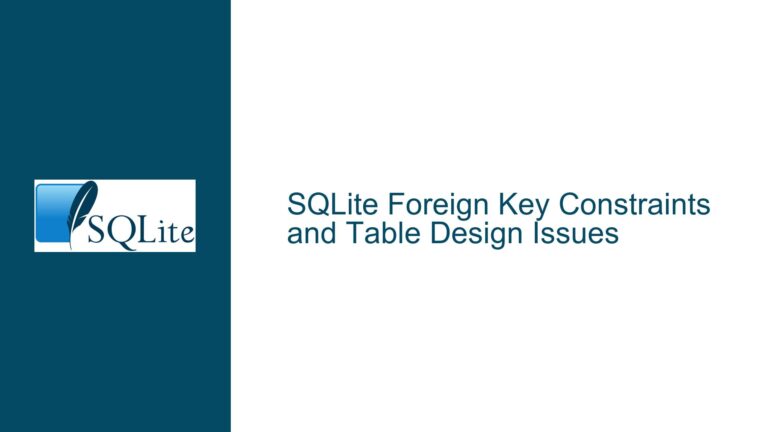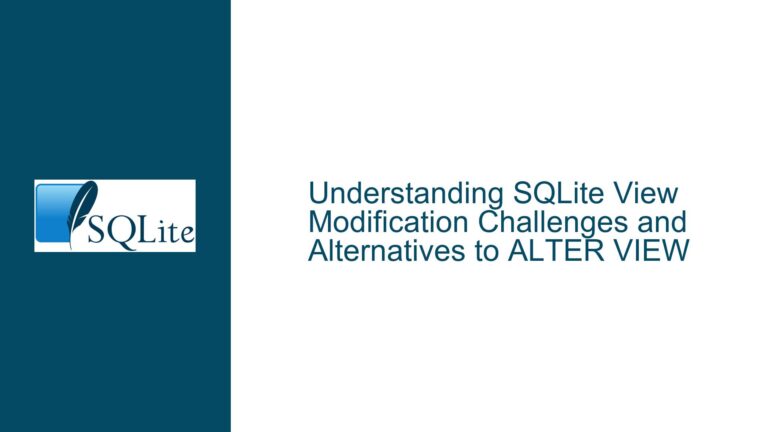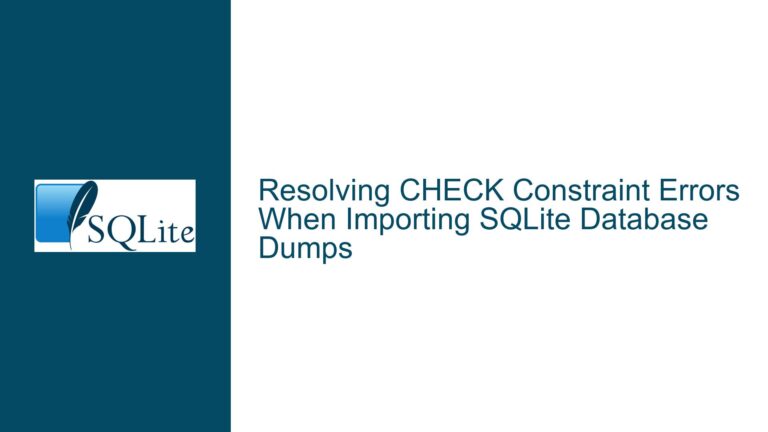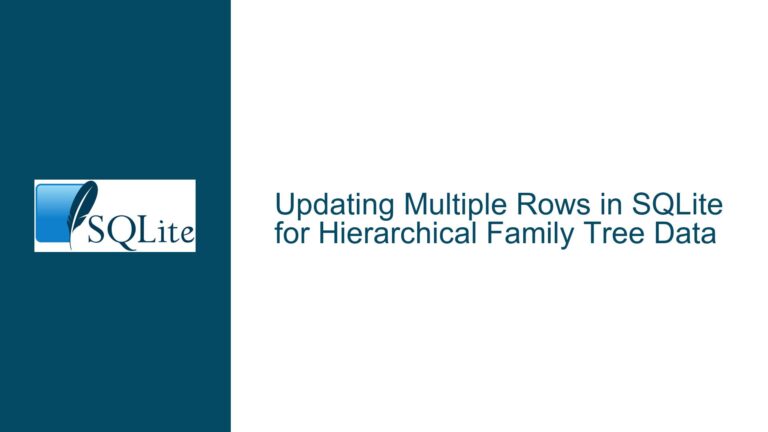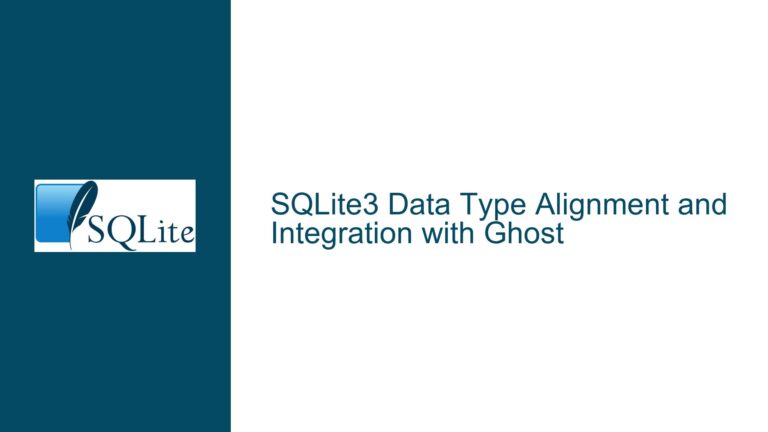Overwriting SQLite Tables with ALTER TABLE AS SELECT
SQLite Table Overwrite Limitations and Workarounds
SQLite, while being a powerful and lightweight database engine, has certain limitations when it comes to altering table structures. One of the most notable limitations is the inability to directly overwrite an existing table with a new one using a single SQL statement. This limitation becomes particularly evident when users attempt to perform complex table alterations that go beyond the basic ALTER TABLE capabilities, such as reordering columns, deleting columns, or completely restructuring a table.
The current workaround involves a multi-step process that includes creating a new table with the desired structure, copying data from the old table to the new one, dropping the old table, and finally renaming the new table to the original table’s name. This process, while functional, is cumbersome and error-prone, especially when dealing with complex schemas that include triggers, views, and foreign key constraints.
The primary issue arises from SQLite’s handling of table alterations. SQLite’s ALTER TABLE command is limited in scope, primarily allowing only the addition of columns or the renaming of tables and columns. More complex alterations, such as dropping columns or changing column order, require the aforementioned workaround. This limitation is rooted in SQLite’s design philosophy, which prioritizes simplicity and minimalism over the inclusion of complex features that might bloat the database engine.
However, this design choice can lead to significant challenges for developers who need to perform more advanced table manipulations. For instance, consider a scenario where a developer needs to reorder columns in a table. The current process would involve creating a new table with the desired column order, copying the data over, dropping the original table, and renaming the new table. This process not only requires multiple SQL statements but also necessitates careful handling of any associated database objects, such as indices, triggers, and foreign key constraints.
Moreover, the process becomes even more complicated when dealing with triggers and views that reference the original table. SQLite’s PRAGMA legacy_alter_table can be used to mitigate some of these issues, but it is not a comprehensive solution. For example, if a referenced column is renamed or deleted, the PRAGMA legacy_alter_table setting will not prevent the associated triggers or views from breaking. This limitation underscores the need for a more robust solution that can handle these edge cases more gracefully.
Complex Schema Dependencies and Atomic Operations
The inability to overwrite a table directly in SQLite is further complicated by the database’s handling of schema dependencies. When a table is altered or replaced, any dependent objects such as triggers, views, and foreign key constraints must be carefully managed to avoid breaking the database schema. This management is particularly challenging when the table being altered is referenced by multiple other objects, as each reference must be updated to reflect the new table structure.
One of the key challenges in this process is ensuring atomicity. In a multi-step table alteration process, there is always a risk that the operation could be interrupted, leaving the database in an inconsistent state. For example, if the process is interrupted after the old table is dropped but before the new table is renamed, the database could be left without the original table, leading to potential data loss or corruption.
To mitigate this risk, developers often use transactions to ensure that the entire process is atomic. However, even with transactions, there are limitations. For instance, SQLite does not support schema changes within a transaction, meaning that the creation of a new table and the dropping of an old table must be done outside of a transaction. This limitation increases the risk of inconsistency if the process is interrupted.
Another challenge is the handling of foreign key constraints. When a table is replaced, any foreign key constraints that reference the original table must be updated to reference the new table. This process can be particularly complex if the foreign key constraints are part of a larger schema with multiple interdependent tables. In such cases, the developer must carefully manage the order in which tables are altered to avoid breaking foreign key constraints.
The complexity of managing schema dependencies is further exacerbated by the need to handle triggers and views. Triggers that reference the original table must be updated to reference the new table, and views that reference the original table must be recreated to reflect the new table structure. This process can be error-prone, especially in large schemas with many interdependent objects.
Implementing PRAGMA journal_mode and Database Backup Strategies
Given the challenges associated with overwriting tables in SQLite, it is essential to implement robust strategies to ensure data integrity and minimize the risk of corruption. One such strategy is the use of PRAGMA journal_mode to control how SQLite handles transactions and ensures data consistency. The journal_mode pragma can be set to various modes, including DELETE, TRUNCATE, PERSIST, and WAL (Write-Ahead Logging), each of which offers different trade-offs in terms of performance and reliability.
For example, setting PRAGMA journal_mode to WAL can improve performance by allowing concurrent reads and writes, while also providing better crash recovery. However, the WAL mode may not be suitable for all use cases, particularly in environments where disk space is limited, as it can lead to the accumulation of large WAL files.
Another important strategy is the implementation of regular database backups. Given the risks associated with complex table alterations, it is crucial to have a reliable backup strategy in place to ensure that data can be recovered in the event of a failure. SQLite provides several methods for backing up databases, including the use of the .backup command in the SQLite command-line interface, as well as programmatic methods using the SQLite API.
In addition to these strategies, developers should also consider the use of version control for database schemas. By maintaining a versioned history of schema changes, developers can more easily track and manage changes, reducing the risk of errors and inconsistencies. This approach can be particularly useful in collaborative environments where multiple developers are working on the same database.
Finally, it is important to thoroughly test any table alteration process in a controlled environment before applying it to a production database. This testing should include not only the basic functionality of the process but also edge cases and failure scenarios. By thoroughly testing the process, developers can identify and address potential issues before they impact the production environment.
In conclusion, while SQLite’s limitations on table alterations can pose significant challenges, these challenges can be mitigated through careful planning and the implementation of robust strategies. By understanding the complexities of schema dependencies, ensuring atomicity, and implementing reliable backup and recovery strategies, developers can safely and effectively manage table alterations in SQLite.
